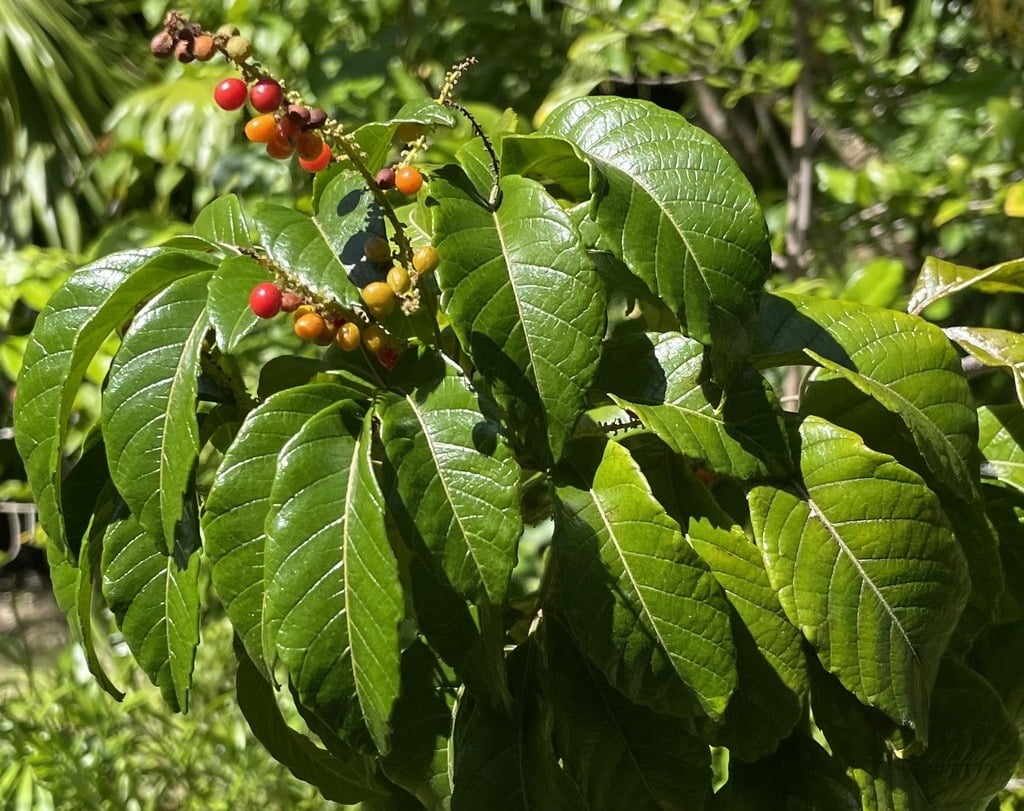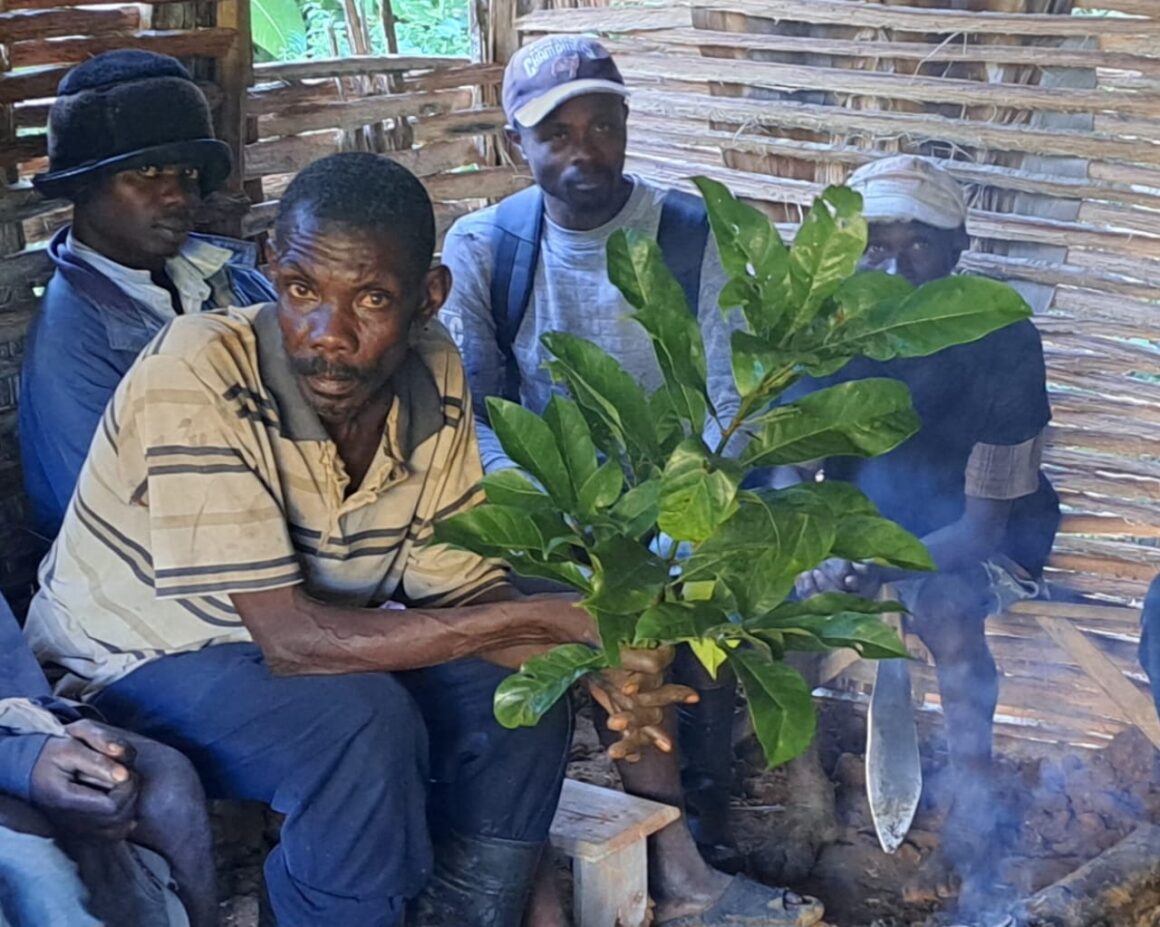In a thrilling discovery for biodiversity enthusiasts and conservationists alike, we are excited to announce the identification of two native species in the pristine landscapes of Grand Bois National Park.
Our dedicated team of botanists has been diligently exploring the rich natural tapestry of Grand Bois, and their efforts have yielded remarkable results. Two of the newly re-discovered species have been identified as “Twa fèy” (Allophylus cominia) and “Bwa kochon” (Protium balsamiferum).
The third species, often referred to as “Bwa krapo” in Creole, or the “frog tree” in English, has yet to be formally identified. We like the name, since Grand Bois is home to about 25 frog species and the locals explain that frogs are often found on the tree hence its common name.
It may be an unknown species, adding an element of excitement to this ongoing exploration. Our teams are working to determine its exact identity and ascertain whether it represents a new discovery in the world of science. One thing is certain: this mysterious species is undoubtedly endemic to the Grand Bois region, making it a vital focus of our conservation efforts.

Credit: Wilson Jean
Twa fèy (Allophylus cominia)
Allophylus cominia, known locally as “Twa fèy,” is a small to medium-sized that can reach heights of up to 10 meters. This species is found in the lowland moist forests of the Greater Antilles and Central America. Its English common name, “Christmas Berry,” reflects the timing of its bright red berries, which appear in October and are a festive sight by Christmas.
In Haiti, the name “Twa fèy” originates from the compound leaves, each consisting of three leaflets. The bright red fruit serves as a crucial food source for local wildlife, particularly birds. Birds play a vital role in spreading the species as they disperse the seeds, facilitating the growth of new trees throughout the region.
Beyond its ecological importance, “Twa fèy” holds cultural significance for the local communities of Grand Bois. It is often used in voodoo ceremonies, where it is believed to possess mystical properties. It is also a medicinal plant that provides a remedy for stomach aches, colds, dysentery, tetanus and tuberculosis.
Endemism: Bahamas, Belize, Cayman Islands, Cuba, Dominican Republic, Guatemala, Haiti, Honduras, Jamaica, Mexico.

Credit: Ann Stafford
Bwa kochon (Protium balsamiferum)
Protium balsamiferum, commonly known as “Bwa kochon,” is a large tree that can soar to heights of 25 meters. This species thrives in the low to mid-elevation moist forests of Hispaniola, Puerto Rico, St. Croix, and Guadeloupe. Its reddish-brown, sturdy wood has a wide range of practical applications, including furniture making, house and bridge construction, and flooring. Additionally, it yields a fragrant resin of value.
In Haiti, “Bwa kochon” is a versatile medicinal plant utilized to treat various ailments, including rheumatism, colic, gastrointestinal issues, fever, and respiratory conditions. Local communities in Grand Bois have forged a close relationship with “Bwa kochon,” as they believe in its natural powers. They have even discovered a unique use for its leaves, macerating them in Haitian white rum, known as kleren, to create an aphrodisiac believed to enhance sexual performance.
The fruit’s sweetness attracts wildlife, potentially earning it the nickname “Bois cochon” (pig tree), as pigs are known to relish it. This natural phenomenon contributes to the dispersal of seeds, allowing the species to regenerate in different areas.

Credit: Wilson Jean
The communities in Grand Bois have a deep-rooted connection to these species, considering them mystical. The number of individuals found within the park has been limited, however, our teams have collected seeds from all three species, which have been safely added to our native in-situ nurseries. This initiative is part of our ongoing reforestation efforts, designed to prevent these species from facing extinction.
We invite you to stay tuned for updates as we work tirelessly to unveil the identity of the enigmatic “Bwa krapo” and continue our mission to protect and preserve the invaluable biodiversity of Grand Bois National Park and Haiti.


